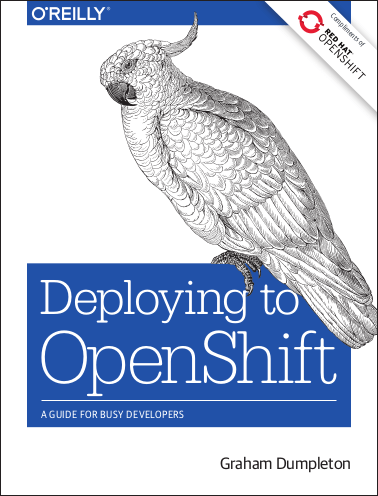OpenShift is recognised as the go-to distribution of Kubernetes for the enterprise. Like how the Linux kernel is much more useful when it's packaged into the Red Hat Enterprise Linux distribution, OpenShift takes Kubernetes and adds the extra components required to turn it into a complete container platform you can use in your organization.
At Red Hat we are always striving to provide you with the best information possible to help you successfully apply OpenShift. This includes our documentation, interactive learning environment, and the posts you find here.
In the past we have also made available the free eBooks OpenShift for Developers, and DevOps with OpenShift. To add to these we now have a third title, Deploying to OpenShift.
You can download the electronic version of the book at:
https://www.openshift.com/promotions/deploying-to-openshift.html
This practical guide describes in detail how OpenShift, building on Kubernetes, enables you to automate the way you create, ship, and run applications in a containerized environment, be they cloud-native applications, or more traditional stateful applications.
In the book, you will learn the following concepts:
- Create a project and deploy pre-existing application container images
- Build application container images from source and deploy them
- Implement and extend application image builders
- Use incremental and chained builds to accelerate build times
- Automate builds by using a webhook to link OpenShift to a Git repository
- Add configuration and secrets to the container as project resources
- Make an application visible outside the OpenShift cluster
- Manage persistent storage inside an OpenShift container
- Monitor application health and manage the application lifecycle
I hope you enjoy this free book and that it will help you get up and running on OpenShift. If looking for an environment to try out OpenShift, sign up for our free OpenShift Online Starter environment.
About the author
More like this
Browse by channel
Automation
The latest on IT automation that spans tech, teams, and environments
Artificial intelligence
Explore the platforms and partners building a faster path for AI
Open hybrid cloud
Explore how we build a more flexible future with hybrid cloud
Security
Explore how we reduce risks across environments and technologies
Edge computing
Updates on the solutions that simplify infrastructure at the edge
Infrastructure
Stay up to date on the world’s leading enterprise Linux platform
Applications
The latest on our solutions to the toughest application challenges
Original shows
Entertaining stories from the makers and leaders in enterprise tech
Products
- Red Hat Enterprise Linux
- Red Hat OpenShift
- Red Hat Ansible Automation Platform
- Cloud services
- See all products
Tools
- Training and certification
- My account
- Developer resources
- Customer support
- Red Hat value calculator
- Red Hat Ecosystem Catalog
- Find a partner
Try, buy, & sell
Communicate
About Red Hat
We’re the world’s leading provider of enterprise open source solutions—including Linux, cloud, container, and Kubernetes. We deliver hardened solutions that make it easier for enterprises to work across platforms and environments, from the core datacenter to the network edge.
Select a language
Red Hat legal and privacy links
- About Red Hat
- Jobs
- Events
- Locations
- Contact Red Hat
- Red Hat Blog
- Diversity, equity, and inclusion
- Cool Stuff Store
- Red Hat Summit


